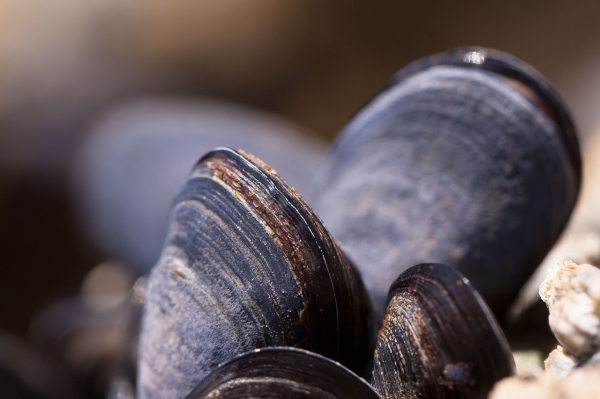Researchers at the American Museum of Natural History have found that over the last 120 years, the porosity—or small-scale holes—in mussel shells along the East Coast of the United States has increased, potentially due to warming waters.
Researchers at the American Museum of Natural History have found that over the last 120 years, the porosity—or small-scale holes—in mussel shells along the East Coast of the United States has increased, potentially due to warming waters. The study, which analyzed modern mussel shells in comparison to specimens in the Museum’s historic collection, was published today in the journal PLOS ONE.
“Mussels are important on so many levels: they provide habitats on reefs, they filter water, they protect coasts during storms, and they are important commercially as well—I love mussels and I know many other people do, too,” said Leanne Melbourne, a Kathryn W. Davis postdoctoral fellow in the Museum’s Master of Arts in Teaching program and the lead author on the study. “Human-caused environmental changes are threatening the ability of mussels and other mollusks to form their shells, and we need to better understand what risks will come from this in the future.”
Previous studies on the blue, or common, mussel (Mytilus edulis) have used lab experiments to investigate how ocean warming and acidification impact the form and function of these important marine invertebrates. Melbourne drew on a historical resource—the Museum’s large bivalve collection, which dates to the late 1800s—to trace environmental changes in natural settings.
Read more at American Museum of Natural History
Photo Credit: stux via Pixabay




